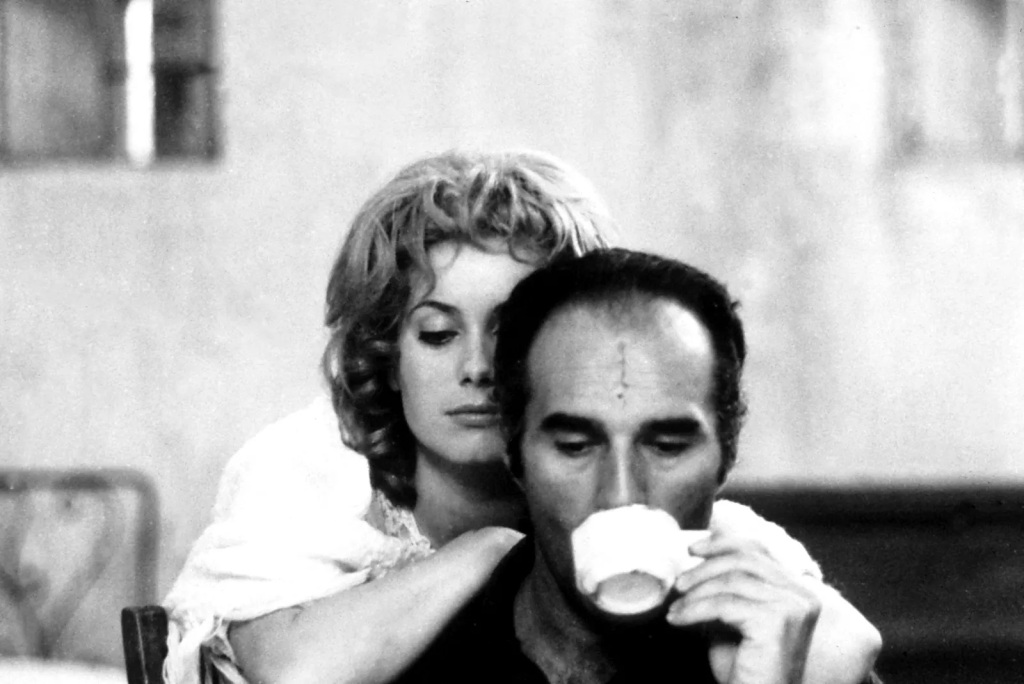
I had a cursory understanding of what The Creatures (1966), written and directed by Agnes Varda, was about. The film opens with a couple – Edgar (Michel Piccoli) and Mylene (Catherine Deneuve) – driving together, Mylene warning Edgar not to drive too fast, and upon that, they inevitably crash. What I was taken aback by was the forehead scar that Edgar sports after the accident, a line down the middle of his brow, stitches evident on both sides of that line. It’s quite an image, and it visually focuses our attention on his head. The contents therein, and how they are translated externally, is a significant part of The Creatures with Edgar being a writer, and the film focusing on his creative process.
Much like Varda’s La Pointe Courte, we have a couple contrasted against the scenery and inhabitants of its location, here the isle of Noirmoutier. On this island, Edgar walks around while Mylene is pregnant at home, and has become mute after the accident, using a chalk board to express herself. With The Creatures, there is symbolic and metatextual quality, which borders into areas of fantasy and science-fiction, and wears the influence of someone like Ingmar Bergman while remaining very Agnes Varda through her sense of humour. I believe the film articulates Varda’s creative process, or an understanding of it, particularly when set in contrast with Edgar’s neighbour, Monsieur Ducasse (Lucien Bodard), a loner who keeps to himself. For Edgar to write, he has to exist out in the world, experiencing it through interactions at his local shop or getting caught up in scrapes such as with two ruffians who run a sheet business. All of this helps to factor into his ideas for stories and situations, and the film takes a surreal turn when the fates of people on the island are rendered as pieces on a chessboard. Or as one commentator on Letterboxd has compared it to, a game of The Sims.
There are experimental flourishes such as when the movie switches from black-and-white into a singular colour to express emotional hypnotism. Or the use of the checkerboard as a symbolic item, and the way in which black-and-white patterns extend to what people are wearing. All of this complemented by Pierre Barbaud’s discordant orchestral score. Existing in its own peculiar universe, when you know more about Varda’s life and how each project was in some way an expression of her life, The Creatures is strengthened by connections to other works. When the wife is left alone in the house while the husband is busy creating, it’s hard to not to draw a line to the main character in Documenteur, left alone with their child in Los Angeles. Strange, sometimes silly, very symbolic and often surprising, The Creatures is available to stream on Kanopy. Recommended.